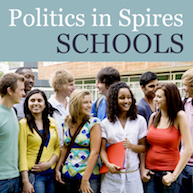
Review of Defekte Visionen. Eine Intervention zur Zukunft der Europäischen Union (Broken Visions. An Intervention on the Future of the European Union) by Alexander Thiele
What does the future of the European Union (EU) look like? Walking along the Rue de la Loi in the European Quarter in Brussels, the white and blue mural stating “The Future is Europe” by graffiti artist NovaDead sends a clear message. The bird in the right-hand corner stands for freedom and peace (referring to the values in Art. 2 of the Treaty on EU), the blue and yellow colours refer to the European flag, and the leaves recall the “green jungle” (a small forest of philodendrons) at the European Parliament in Strasbourg, which could also reflect the complex governance structure of the EU. But beyond this artistic and symbolic vision, what might the future of the EU look like …
Russia’s constitutional reform and Putin’s plans for a legacy of stability
On 15 January, President Vladimir Putin called for a “greater balance between the branches of power” as he announced significant changes to the Russian constitution. On the same day, Prime Minister Dmitry Medvedev and his cabinet resigned and were quickly replaced. The new Prime Minister, Mikhail Mishustin, was a relatively unknown figure in Russia until recently, having previously spearheaded digital modernization efforts as head of the Federal Tax Service. The surprise changes are seen as preparation for the Putin’s departure from the presidency in 2024 given current constitutional restrictions, which prevent him from being president more than two consecutive terms. The proposed constitutional reforms would not facilitate his return to the post in the future, however, but instead propose to weaken the presidency …

Yesterday’s Tomorrows – What Happened to the Future of Government?
Christopher Hood and Ruth Dixon explain the results of their recent project aiming to assess the effects of successive efforts to reform the executive government (the ‘state machine’) of the UK over the past thirty years. This project explores how those reforms played out, and how far they delivered on what had been claimed and expected of them. How much ‘leaner and meaner’ was the state machine after a generation of such changes? Such an exploration is not only an interesting study in its own right; it is also significant for assessing the prospects for the future of government in the coming decades, for example in assessing how government changed in the periods of cutbacks in the 1980s and early 1990s in the context of what is likely to be a period of prolonged fiscal restraint in the 2010s.









